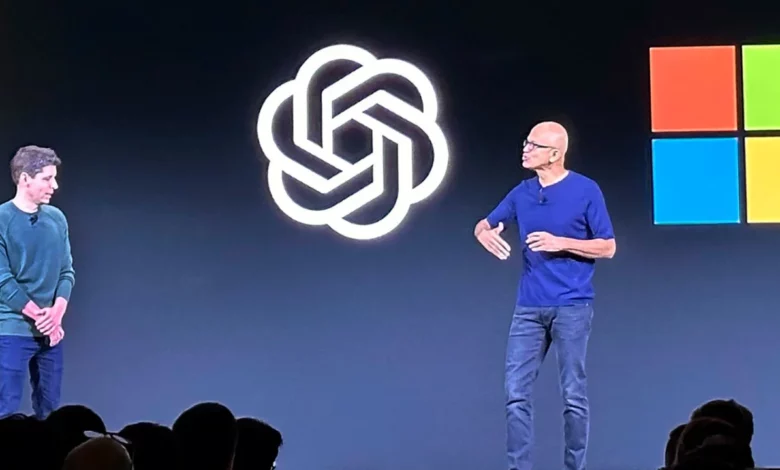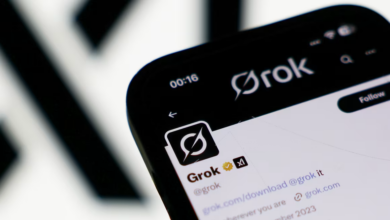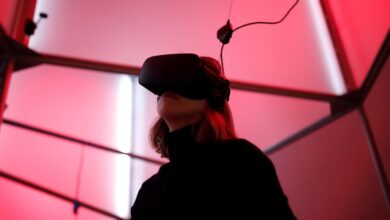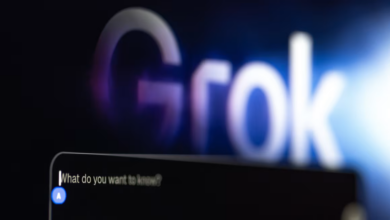
The battle over the most consequential technology in decades is getting ugly, fast. OpenAI’s incredible upheaval — with former CEO Sam Altman caught in the middle — could have broad implications for who gets to control the future of artificial intelligence.
A year ago, OpenAI was an obscure startup that unleashed a technology so powerful, it almost immediately invited comparisons to Prometheus bringing fire down from the realm of the gods. ChatGPT — the impressively human-sounding artificial intelligence tool — and the scrappy nonprofit that built it, quickly became synonymous with the emerging field of generative artificial intelligence.
Now, just 12 months later, a disastrous boardroom shakeup has upended the power balance in the industry. With OpenAI facing a potential mutiny, it’s Microsoft — the 50-year-old behemoth best known for stodgy office work software like Excel and PowerPoint — that finds itself suddenly at the cutting edge of the most significant technological innovation in decades.
Microsoft announced that Altman and several other key members of OpenAI would join the company to help with its artificial intelligence innovation. Its plan to integrate the ChatGPT braintrust under its own brand could turbo-charge the expansion of AI-powered tools, potentially realizing the worst fears of the OpenAI founders who feared the dangerous-in-the-wrong-hands technology could be rolled out too quickly in the effort to turn a profit.
What happened?
In short: The OpenAI board abruptly fired its CEO and co-founder, Sam Altman, on Friday, setting off a chaotic weekend in which the board tried and failed to undo the decision. Within 48 hours, Microsoft had announced that it had tapped Altman to lead a new in-house AI group.
The anger within OpenAI spilled over on Monday, more than 500 of its employees threatened to quit unless they get Altman back and the current board resigns.
The news that Altman and another OpenAI co-founder, Greg Brockman, would defect drove Microsoft’s shares to a record high on Monday.
On Monday, Microsoft CEO Satya Nadella conceded in interviews with CNBC and CNN contributor Kara Swisher on her podcast, “On with Kara Swisher,” that the battle over Altman is not yet over. He acknowledged Altman may ultimately return to lead OpenAI if the hundreds of employees who threatened to resign are successful in their attempt to lure him back.
However, Microsoft has already won the war: It is OpenAI’s most important stakeholder, with a promised $13 billion investment. That means Nadella and Co. get Altman either way: They can have their AI cake and eat it, too.
“All those VCs and sovereign wealth funds would have lined up to give Altman whatever money he needed to do whatever thing he wanted to,” said Jason Schloetzer, an associate professor at Georgetown’s McDonough School of Business.
“And now they can’t access that … the only thing they can do is invest in Microsoft.”
The Altman factor
Altman is the AI date everyone wants to bring to the prom. In the past year, he has become the public face of the industry, and was instrumental in forging OpenAI’s partnership with Microsoft, which began in 2019. And last year, he introduced ChatGPT to the world, a technology that has become synonymous with AI and made its promise real and tangible to millions of people who had no idea software was capable of approximating something this … human.
But Altman is not the ultimate prize: Leadership in the artificial intelligence space is. The technology is either being used or has broad implications to shakeup every industry: from driverless cars, to finance, to the classroom, to journalism – even art and music.
And Microsoft has an enormous leg up over the competition. Nothing is guaranteed, but its relationship with Altman and OpenAI has put Microsoft in the pole position.
The relationship between OpenAI and Microsoft has been beneficial for both companies. OpenAI relies heavily on Microsoft’s cloud computing infrastructure, Azure. And Microsoft’s association with the hottest startup in Silicon Valley has helped restore its image among developers.
If Altman ultimate joins Microsoft, it “ill be able to harness a lot of the progress that was made at OpenAI more directly rather than at arms-length,” said Gil Luria, managing director and senior software analyst at D.A. Davidson. “[Microsoft] now controls the team that has made this remarkable progress, which puts them in a position to control the development path for this technology for the next several years.
The future of OpenAI has many tech startups in the AI space scrambling to figure out what happens next: OpenAI’s technology has become the standard for developers, Luria said, and Microsoft will be trying to maintain that standard rather than cede ground to rivals at Google or Anthropic.
“When you use the OpenAI standards, you’re using Azure,” he said. “The biggest benefit to Microsoft from this OpenAI relationship was reinvigorating growth at Azure.”
In hiring Altman to lead an in-house AI team, Microsoft is counting on the founder’s magnetism to attract talent and money from investors, and smooth over regulatory hurdles that could snare the rollout of AI-powered tools.
Philosophical tension
OpenAI’s board has made only vague public statements about the reason for firing Altman, saying that he was “not consistently candid in his communications with the board.”
But several people told CNN contributor Kara Swisher that a key factor in the decision was a disagreement about how quickly to bring AI to the market. Altman, sources say, wanted to move quickly, while the OpenAI board wanted to move more cautiously.
“The OpenAI debacle is the result of a tension between people who believe that AI discoveries are safe enough, and should be pursued rapidly right now, versus people who believe AI discoveries … should be tempered with some discernment about what the potential cost could be of releasing them,” Schloetzer said.
Altman has been one of the loudest voices pleading for regulation. At the same time, he has been one of the fastest movers, turning the profitable arm of OpenAI into a $90 billion company practically overnight.
Both achievements are possible, and OpenAI’s strange structure — a nonprofit overseeing a for-profit company — was designed to contain AI from destroying humanity. Yet the soap opera at OpenAI threatens to upset that balance. Soon, we may need to rely on Microsoft, one of the biggest, most powerful companies in the world, to ensure that AI is used for good and not evil.
— CNN’s Clare Duffy contributed to this article.




